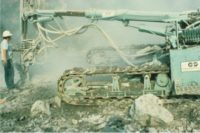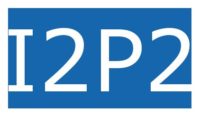To the specific questions OSHA poses in the Proposed Rule, ASSE provides the following comments:
Has OSHA adequately identified and documented all critical health impairments associated with occupational exposure to respirable crystalline silica?
OSHA has done a thorough job of compiling and reviewing key studies as part of its risk assessment, and identifying potential health effects related to occupational exposure to respirable crystalline silica, but it is clear that more research will be needed to scrutinize the correlation in some areas (e.g., the link between silica and autoimmune disorders). Because NIOSH is designated in the Occupational Safety and Health Act of 1970 as the agency to conduct research on occupational health to guide OSHA’s regulatory decisions, this would be the logical governmental entity to conduct further studies in this area. Adequate funding should be made available to NIOSH for this purpose.
17. Is the proposed rule technologically feasible?
As written, the proposed rule is probably not entirely technologically feasible for all employers. OSHA itself admits that even following the steps in Table 1 may not result in construction exposures below the rule's limits. Given the number of employers who currently do not meet the 100 ug/m3 PEL, many will likely have trouble complying with the new PEL, much less the action level, from an economic standpoint as well. However, given that the proposed rule is viewed as a technology forcing standard, OSHA should continue to monitor new technological advances to determine ultimately this issue. Technological and economic infeasibility is likely to be the subject of many affirmative defenses to silica citations in the future.
23. Are there particular outreach materials that would make compliance easier?
Including non-mandatory appendices in the final rule will be useful in providing guidance for employers on subjects such as exposure monitoring and medical surveillance, but more will be needed. OSHA has done a commendable job so far in its outreach efforts for the GHS/HazCom final rule, and this same approach can be used for silica. Web-based materials in a number of languages will be needed, but written collateral materials (also multi-lingual) also will be needed to reach and assist the smallest employers who may not have ready access to electronic technology, particularly in the construction sector. Outreach alliance partners should be actively sought by OSHA in advance of promulgating the final rule.
26. Do you believe that improved outreach and enforcement of the existing PELs would be sufficient to reduce significant risks of material health impairment in workers exposed to respirable crystalline silica?
ASSE is aware that there is a line of argument that the incidence of disease is due to employers’ failure to comply with current PELs and/or OSHA’s failure to enforce these limits. The issue is further complicated by the long latency period of chronic silicosis and lung cancer, which suggests that current cases predate many of the existing and common control methodologies now in use to lower exposures. ASSE believes that the body of scientific literature lends support for reducing the PEL to the proposed limit. However, during the years to come as this rule is finalized, potentially adjudicated and phased in, OSHA should continue educational outreach and reasonably considered enforcement through ongoing silica-based emphasis programs for affected industry sectors.
31. Should OSHA modify the scope to limit the construction standard to specific construction operations, as opposed to covering all occupational exposures in construction work?
ASSE supports the proposal to cover all silica exposures in construction work rather than limiting compliance to specific operations.
35. Should there be specific requirements for training of a competent person relating to establishment of an access control plan?
ASSE urges the development of specific competent person training for persons who design and implement an access control plan that exempts prior relevant training (e.g, an OSHA 30-hour course) or persons holding nationally accredited occupational safety and health certifications such as the Certified Safety Professional (CSP) or Certified Industrial Hygienist (CIH).
38. Is the proposed PEL appropriate, given that it will reduce but not eliminate significant risk of material health impairment?
Yes, as this is the lowest limit currently feasible for enforcement purposes.
40. Is the action level of 25 ug/m3 appropriate to be included in the final rule?
Yes.
43. Has OSHA defined "objective data" sufficiently for an employer to know which data can be used?
The qualitative data that employers should be able to use to meet the "objective data" criterion, should include: information from manufacturer/distributor Safety Data Sheets (SDSs) for the silica-containing product or material; prior sampling information for the affected job classifications; likelihood of dust generation in light of the processes used and environmental factors (wind strength and direction, etc.); proximity of airborne dust to the workers; and the nature of the industrial process, and whether it is wet or dry. In some cases, an employer should be permitted to use historical aggregated sampling data throughout the company for pertinent job classifications where there is a commonality in terms of processes and equipment. Where such objective data indicate that a risk of overexposure is present, sampling of tasks or representative worker exposures should be conducted.
44. Should periodic exposure assessment be done on a fixed schedule or should it be performance-based?
Periodic exposure assessment should be performance-based to avoid imposing added expenses for what might be unnecessary testing on a fixed schedule.
50. How would the regulated areas and access control provisions apply at multi-employer worksites?
The host employer or general contractor should have primary responsibility for ensuring compliance with these provisions. If a subcontractor is solely responsible for generating silica exposures that trigger these requirements, that employer must notify the host employer or general contractor in advance of commencing work of the need for regulated areas or access control so that both employers can work cooperatively to ensure compliance and also to notify any other employers on site whose employees may be affected by these requirements.
51. Is protective clothing needed for silica exposures?
No special clothing should be required as crystalline silica does not present a chemical hazard when applied to the skin. Only respiration or inhalation of crystalline silica is a significant health concern. However, employers need to implement programs to assure employees whose clothing is contaminated with crystalline silica do not create exposure issues off the job.
53. Should OSHA require employers to develop and implement written exposure control plans, and what should be in those plans?
Employers with suspected or documented exposures above the PEL should be required to have written exposure control plans, preferably developed by a Certified Safety Professional (CSP) or Certified Industrial Hygienist (CIH). The plan should implement engineering and administrative controls to reduce silica exposures to below the PEL. A root cause analysis should be part of the plan to identify the sources/causes of overexposures. Follow up sampling to ensure the efficacy of further controls should be required.
54. Is the approach taken in Table 1 for construction appropriate and should changes be made?
This is an effective approach and should also be considered for the general industry/maritime standard for commonly performed tasks involving high levels of silica exposure. See also, Tables 1 through 5 in ASTM E2625-09 and Tables 2-6 of ASTM E1132-13 as examples.
56. Should construction employers who comply with table 1 be viewed as in compliance even if they do not ensure compliance with the PEL?
Yes, because following the protective measures in this table can be viewed as akin to implementing all technologically feasible controls and employers who do this should not be cited if exposures remain above the PEL, as OSHA predicts may be the case for tasks such as tuck pointing. In such cases, employee rotation should be permitted to further reduce exposures once the other controls and PPE are utilized.
66. Should the use of compressed air and dry sweeping for cleaning of surfaces and clothing be prohibited?
Generally yes, except where dry sweeping is the only option available. OSHA should also be aware of mobile air shower technology developed for the mining and oil/gas industry in conjunction with NIOSH that is designed to permit safely the use of compressed air for cleaning of employee clothing. Such emergent technology should be deemed compliant in the future under this rule rather than requiring a variance.
68. Should employee rotation be prohibited as a means of achieving compliance with the PEL?
No. See our comments supra.
72. Is the requirement for latent TB testing appropriate?
The requirement for latent TB testing is appropriate, given OSHA's role as a public health agency and considering the potential benefits from early diagnosis and treatment of TB and its impact on the spread of this contagious disease. This requirement is also appropriate given the studies that suggest an increased risk of adverse health effects from silica exposure to workers with TB.
73. Is the requirement for pulmonary function testing initially and at three-year intervals appropriate?
Yes, this requirement is consistent with most credible occupational health programs related to respirable crystalline silica exposure.
74. Is the requirement for chest x-rays initially and at three-year intervals appropriate?
Yes. However, OSHA should also consider what will constitute a finding that is recordable or reportable to the agency as constituting a diagnosis of silicosis. The Mine Safety and Health Administration (MSHA) requires reporting of a 1/0 reading by a B-reader to be a presumptive diagnosis, although the employer can get a second opinion at its own expense.
77. Is exposure for 30 days from initial assignment, at or above the PEL, the appropriate number of days to trigger medical surveillance?
For stable workforces, this would be appropriate. However, ASSE is concerned that many contingent or temporary workers as well as workers misclassified as contractors may be deprived of full protection under such a system.
80. Should there be medical removal provisions in the final rule?
No, we agree with OSHA's position that this would provide little benefit.
81/82. Should additional training beyond HazCom training be required for those working with respirable crystalline silica? Should warning labels be changed?
No, full compliance with the newly revised GHS/HazCom rule should be adequate.
84. Are the record keeping requirements for air monitoring, objective data, and medical surveillance appropriate?
ASSE supports consistency with the ASTM silica standards, which provide for retaining these records for at least 40 years or for the duration of employment plus 20 years, whichever is longer, due to the long latency periods of some silica-related illnesses.
Finally, ASSE appreciates the opportunity to comment on this proposed rule. We look forward to continued participation in the process that we hope, in the end, can result in a standard that is consistent with the success our member safety and health professionals have had in helping employers protect workers from respirable silica risks so that all employees can enjoy the same protections.
Sincerely,
Kathy A. Seabrook CSP, CMIOSH, EurOSHM
President


